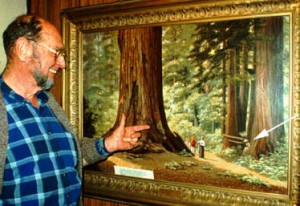
Leonard McKay
Welcome to www.leonardmckay.com, the site dedicated to the life and learnings of Leonard McKay, historian, San Jose, California. My grandfather was an amazing man and a wealth of knowledge. As such, I have decided that it is a crime to let his knowledge go to waste, and will be developing this site in his honor.
UPDATED
Excerpts from Leonard's Blog
The Canning Industry in San Jose: The canning industry got its start in 1871 when Dr. Dawson and his wife canned some fruit over an old cook stove in their backyard on The Alameda. From this humble start, a huge industry developed right here in San Jose for three basic reasons: the fruit was grown here, there was a ready supply of labor and two railroads, Western Pacific and Southern Pacific, built rail sidings right to the canning plants.
The 1906 Earthquake (Part 5): “Agnews Asylum had suffered the worst catastrophe in the Valley. Santa Clara College had nobly responded. With all the wires down, a horseman had taken word to Santa Clara and at least 100 students had run or ridden their wheels after the horseman to the great disaster. Wagons passed us transporting casualties to Santa Clara after they were pulled from the ruins.
The Saratoga Relay – Class of 1940: On the occassion of the 50th Class Reunion of Los Gatos High School, the reunion committee asked L McKay for his reminiscences.
The Baronda Mayhem Trial: I wish to tell the true story of a real incident from a century ago when a local fire captain suffered the same fate as John Wayne Bobbitt, and it happened right here in San Jose. As a matter of fact, it happened on what is now San Pedro Square.
Sarah Winchester: I want to tell you a different side of the story about one of San Jose’s most interesting characters, Sarah Winchester.
